Peru offers a very old culture, very varied, at the same time mysterious, bright and fragile. If the chunchos, who roam among the thick forests of the mountain, are still wrapped in fierce rudeness, for sure centuries have appeared in the mountains and on the coast certain signs of a sweet and progressive civilization.
Peru has presented all forms of government: communities, confederations, manors, the largest empire, a vast viceroyalty subject abroad and an independent republic.
The grossest idolatry has joined high notions about the breeder of the universe. Barbarism has closely touched a refined civilization.
The people lay in misery, while the splendor of the government dazzled. A wise policy and admirable advances in the arts have been seen appearing suddenly, so far the veil that wraps its mysterious origin cannot be removed.
History of Peru
The History of Peru dates back to about 20,000 years B.C. approximately, when the territory began to be populated with groups of men and women hunters and gatherers.
In the territory of South America, true civilizations that we call "pre-Incas" were developing; the most important were:
- On the Coast: Chimú, Nazca, Paracas.
- In the Sierra: Chavín, Tiahuanaco.
For Dr. Julio C. Tello, the Chavín culture was the oldest in History of Peru: 1000 - 250 a. C. Its main center is located in Chavín de Huántar, in the Ancash region. Even before the discovery of Caral, the first great Peruvian civilization was believed in Chavín.
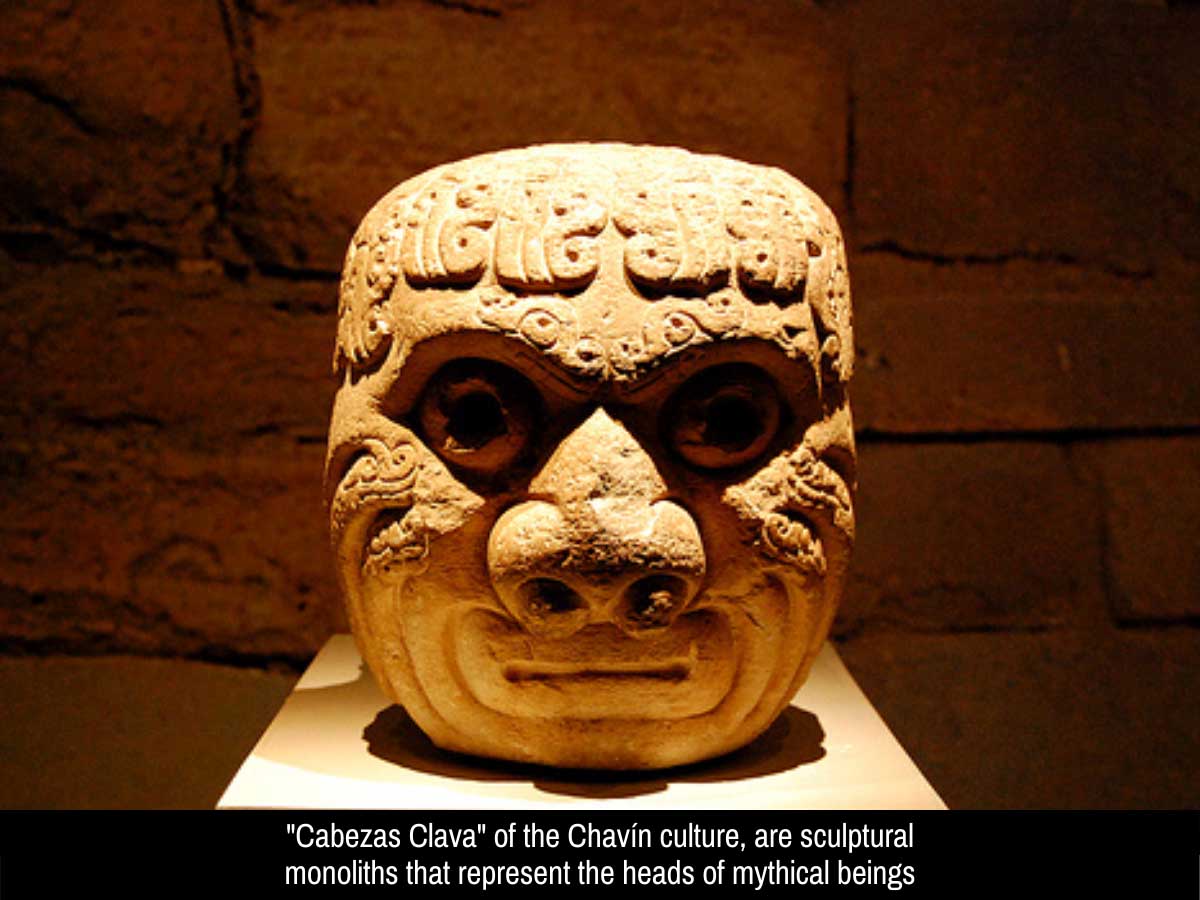
From then on, the peoples of South America developed various cultural facets: architecture, economy, religion, etc.
Around 700 B.C. another fascinating culture appeared on the central coast, the first great settlers of the desert: Paracas, whose settlers were skilled weavers and stood out for having successfully performed skull operations.
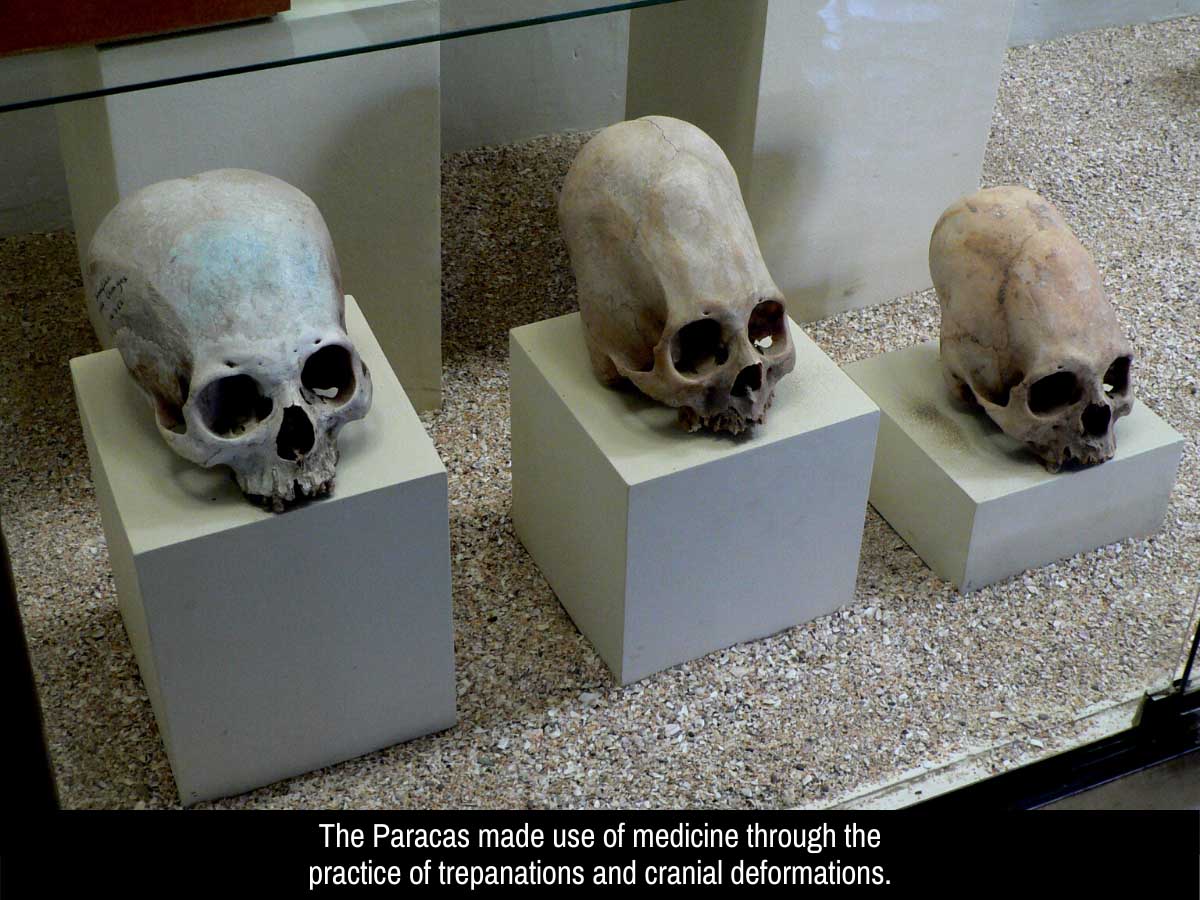
With their center in the Moche Valley, in La Libertad, the Mochica are characterized by their figurative pottery, their delicate goldsmith work and their efficient use of water resources.
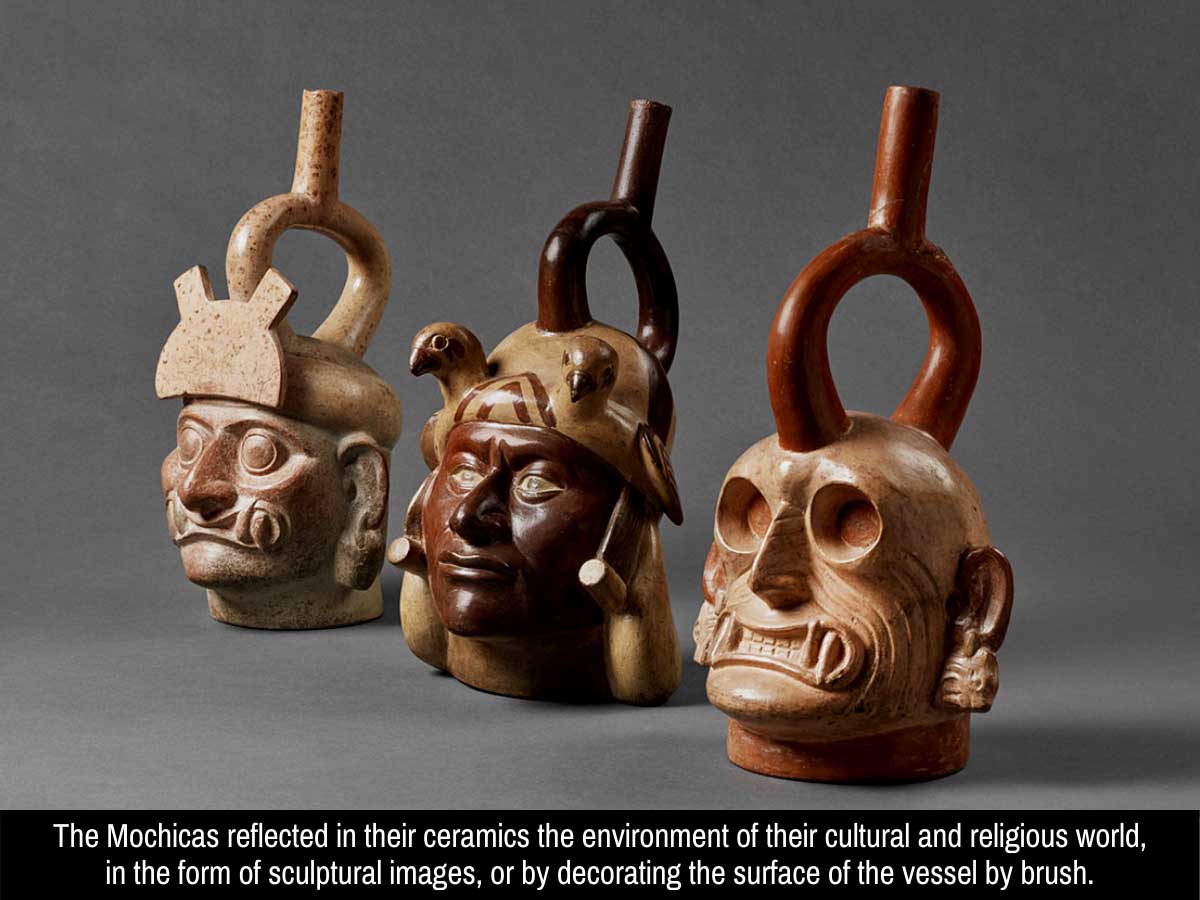
After this first regional development, what is called the first regional empire appeared: Wari, around 550 A.D. It was they who controlled with the layout of the great pre-Hispanic roads and laid the foundations of the social administration and the territory that the Incas of Cusco would later inherit.
With the disappearance of Wari, approximately in 1200 A.D. the Late Intermediate period begins, where there are several cultures such as Ichma, holders of the powerful oracle of Pachacamac; the Chincha, great marine merchants; and especially the Chimú, great lords of the north, who built the extensive city of Chan Chan, the largest adobe building in the world.
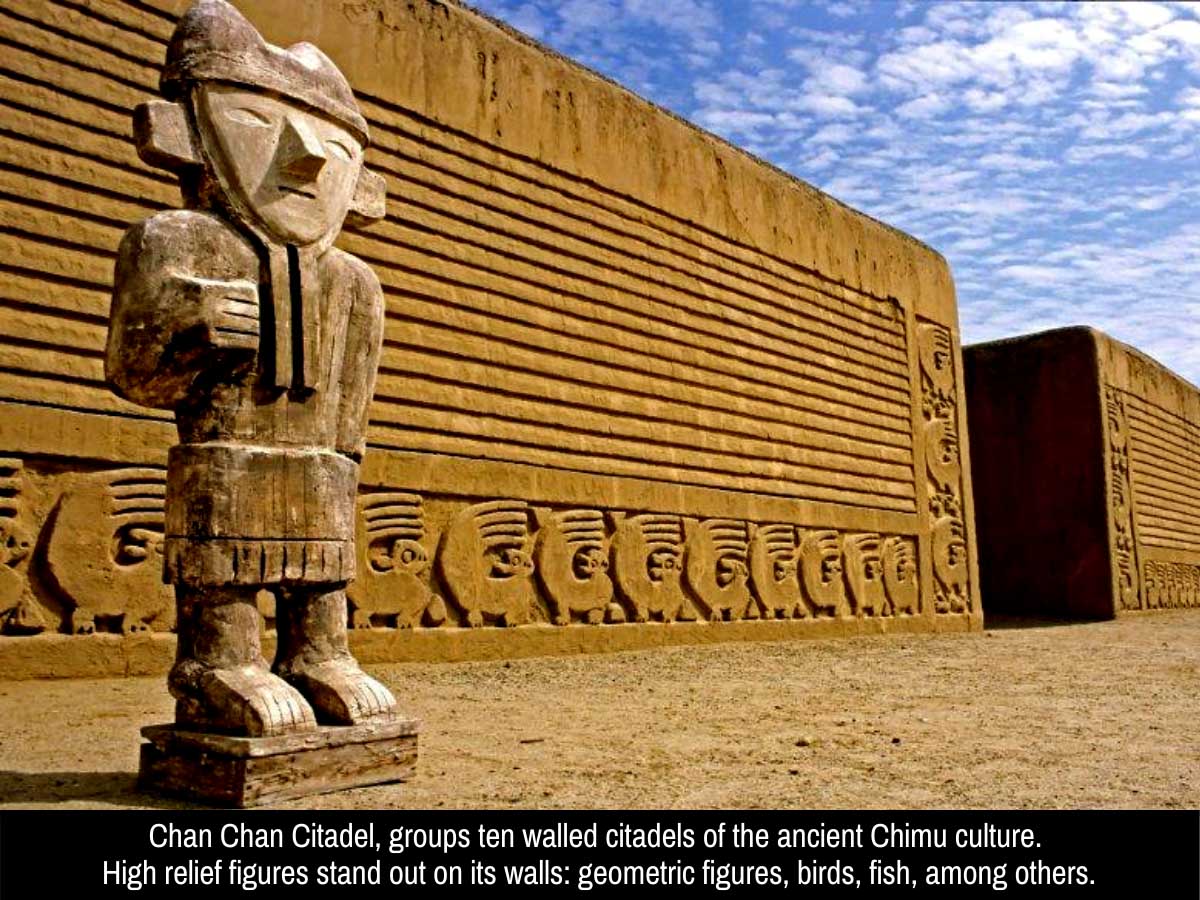
This is also the time of the Chachapoyas, the ‘men of the clouds’, where they built the most amazing cities and mausoleums, which they excavated in the most sharp cliffs.
While these cultures reach their peak, in the valley of the Vilcanota River, in Cusco, the Incas forged the largest empire in America.
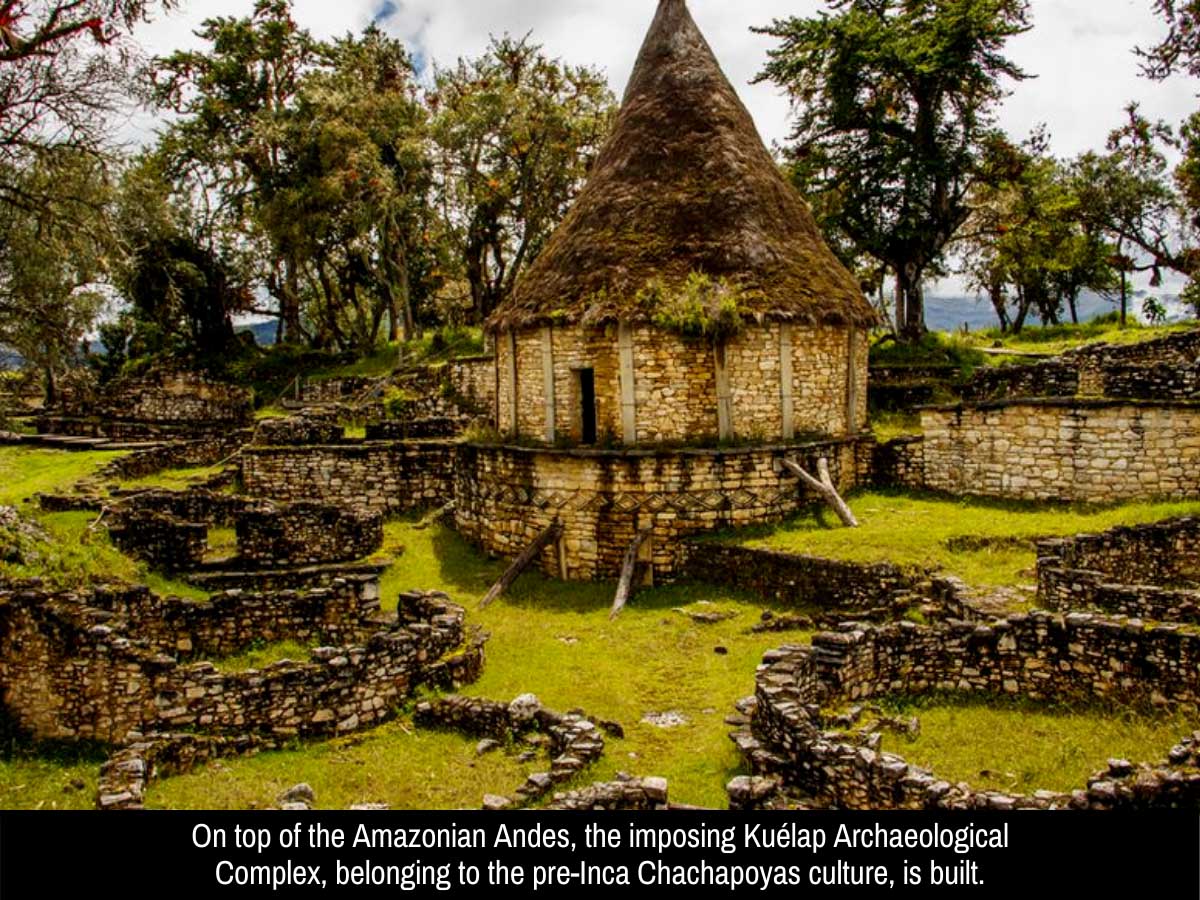
Between the twelfth and fifteenth centuries, the Incas created a great state connected by an efficient network of roads - the Qhapac Ñan - that synthesized millennia of wisdom. Today you can travel a section through the Inca Trail that leads to Machu Picchu.
Far from ending conquered cultures, the Incas assimilated the ways of life of their subjects and used the best of each town to build their amazing culture.
History on Peru: The Incas
Inca Origins
The Inca empire spanned a relatively short period in Peruvian history. The mythical origins of the first Inca Manco Capac and Mama Ocllo, who emerged from a cave, is typical of Peruvian ancestor tradition. Spanish Chroniclers such as Inca Garcilazo de la Vega and others. recorded at least 10 subsequent Inca rulers although in reality the earlier kings were probably not real people.
The famous Inca, Pachacuti is credited with expansion from the capital Cusco. Inca Inca iconographic tradition that followed geometric and abstract design left no representational images of its rulers.
Inca Empire
Within three generations the Incas had expanded far beyond the boundaries of modern Peru to central Chile in the south and past the equator to the north. The Amazon basin was an environment they did not successfully penetrate. Although the Incas fought battles, it was a two-way process of negotiation with Curacas, the local chiefs that brought many ethnic groups under control. The empire was divided into four suyus or towns, the capital was in Cusco. At a lower level communities were organized into decimal units ranging from 10 households up to a province of 40,000 households. Individual work for the state was known as mit´a. Communities forcibly resettled to foreign lands were called mitimaes. The Inca kept a regular population census and record of all the sacred idols and shrines. The Incas spread the language Quechua that is still spoken throughout most of Perú and in neighboring countries.
The Inca Empire was the strongest in the region, along with the Mayan and Aztec peoples.
Its antiquity dates back to the year 1200 A.D. approximately.
The main center was the city of Cusco from where more than 40,000 km of roads and hundreds of conquered towns were governed.
According to History on Peru, the Incas who ruled the empire can be classified into two dynasties: the Legendary or Mythical Inca Dynasty (from 1200 AD to 1410 AD) and the Historic Inca Dynasty (from 1438 to 1532).
Precisely, when the last two Incas, Huáscar and Atahuallpa, were disputing the throne of the Empire, the Spanish conquerors made their appearance from Central America, headed to Tumbes, to Cusco.
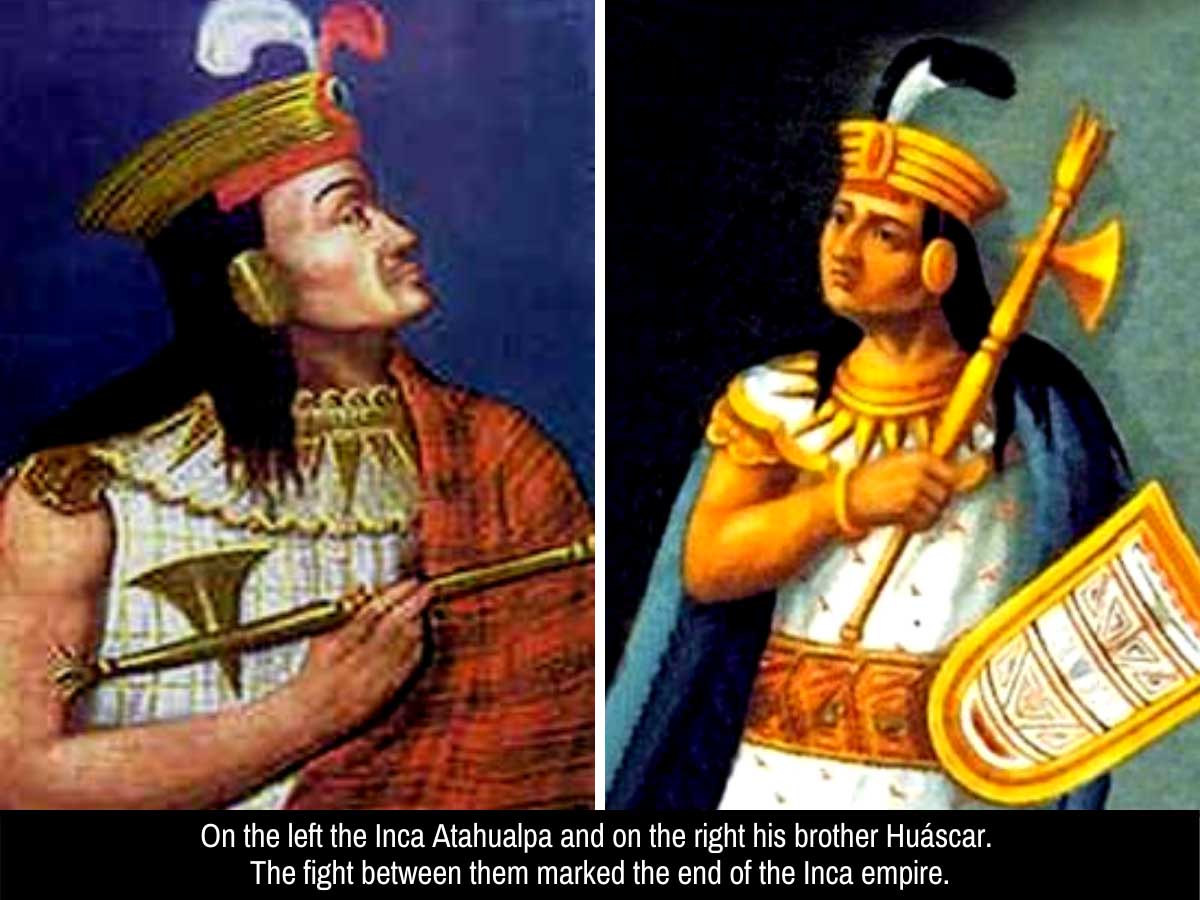
Nowadays you can learn more about this culture through the Inti Raymi, a festival of living Inca culture.
History on Peru: The Conquest
The Conquest meant a radical change in the composition of society and in the worldview of the inhabitants of Peru.
In 1532, Francisco Pizarro's hosts captured the Inca Atahualpa in Cajamarca and that marked the decline of the Inca Empire.
In 1542 the Viceroyalty of Peru was created, which remained for almost 200 years under various forms of control by its authorities.
This is the time of the great evangelization and indoctrination campaigns, in order to make Peru a true Spanish colony.
The viceroyalty was consolidated in the sixteenth century with the viceroy Francisco de Toledo, who established the foundations of the colonial economy: a system of control of indigenous labor for mining and artisanal production.
The most important indigenous uprising was led by Tupac Amaru II, with whom the Creole movement that made Latin America independent in the 19th century began to be generated; Finally, he was defeated.
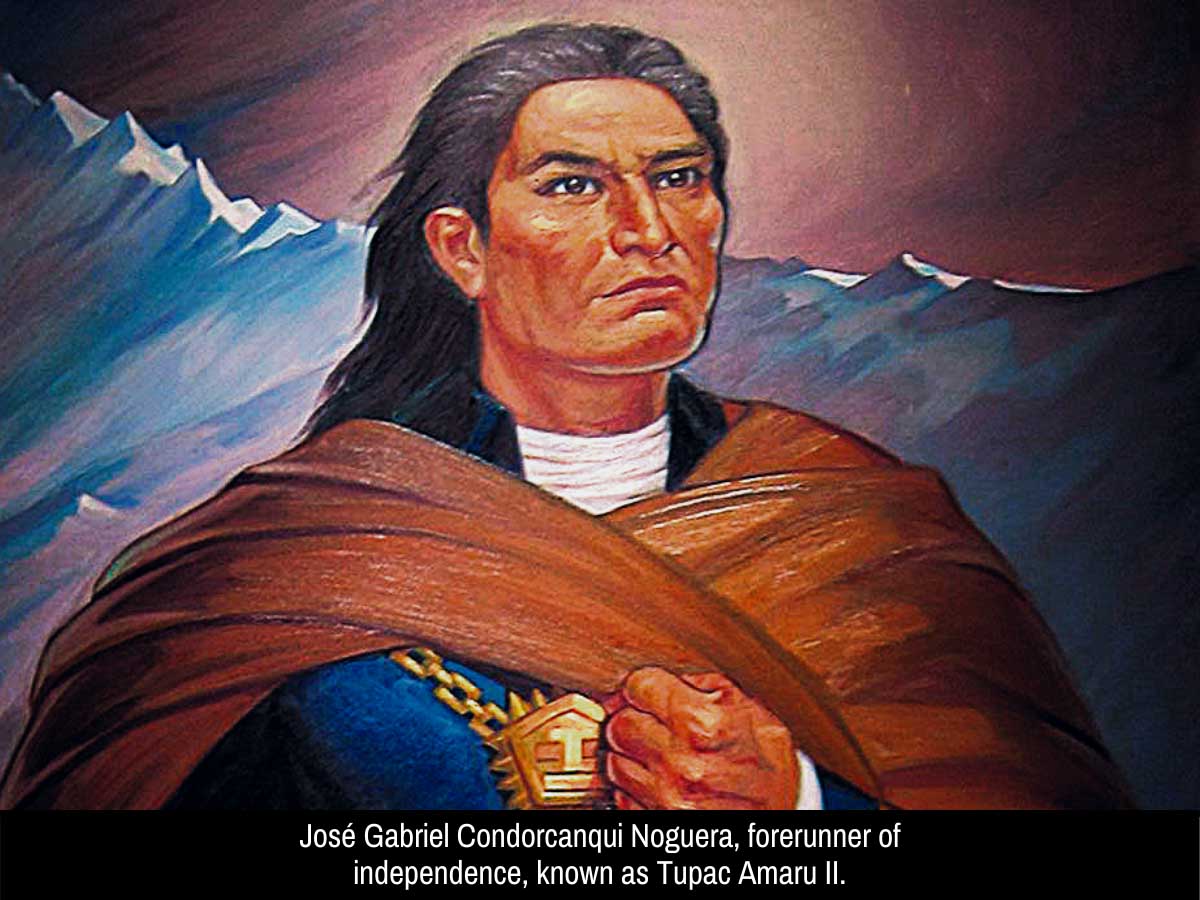
When the impossibility of freedom was supposed, the Creoles (children of Spaniards born in Peru) were the main managers of the future Independence of Peru.
History on Peru: The Republic
This stage was born in 1821, with the oath of Independence in the city of Lima, the capital of Peru, by the Argentine José de San Martín, who, along with the Venezuelan Simón Bolívar, had directed military campaigns.
However, two more battles (Ayacucho and Junín) were necessary in 1824 to finally seal Independence.
As a republic in formation, during its first years Peru had to face economic crises and military caudillismos.
In economic terms, the boom of guano, cotton and sugar occurs. The slavery of blacks ends in the mid-19th century. Subsequently, civil governments emerged with Manuel Pardo.
By 1879 the country faced a war with Chile in which it was defeated.
In the midst of bankruptcy, a new heyday of military governments ensued and civilians returned. Thus, a period called the "Aristocratic Republic" began, which was based on an economy dominated by the landed elite.
During the 1970s, Peru was ruled by a military dictatorship led by General Juan Velasco. The military administration nationalized oil, the media and reformed the agrarian bases.
At the same time, the rise of two terrorist movements that for twenty years shook the country with violence took more importance. In the 1990s, Alberto Fujimori, after a self-coup in 1992, established a series of laws that initiated the end of these terrorist groups. Once finished the goverment, The Alberto sent a letter by fax from Japan and resigned. Then He was court for corruption. Valentin Paniagua was the new president interim during that year.
Since 2000, Peru has had clearly democratic governments in a row, with Alejandro Toledo, Alan García, Ollanta Humala Tasso, Pedro Pablo Kuczynski and Martín Alberto Vizcarra Cornejo.
Since 2021, the new president is Francisco Sagasti
The country is in full economic development, with growth rates never reached and overcoming the crises of past decades.
Best Tours to learn more about History on Peru
Many are the top Peru Trek and Tours, but none is like the Inca Trail Tours, the most famous pedestrian path in the Americas. After flying from the capital of Perú, Lima, you will arrive in Cusco to walk for four days along a path through forests and dense fog, millenary stone steps and discovering the ruins of ancient fortifications and Inca cities, and all the time enjoying majestic views.
- Sacred Valley Day Tour
- Humantay Lake Day Tour
- Short Inca Trail
- Inca Quarry Trek to Machu Picchu 4 Days
- Salkantay Trek 5 days
- Lares Trek 4 days
- 5 Day Inca Trail to Machu Picchu
If you want to visit Machu Picchu, we recommend you to book online your Huayna Picchu Tickets 2025 in advance, so you will enjoy popular activities in Perú without any problem.
Best Time To Visit Peru
We can recommend to visit on the dry season, which covers the months April to the end of September. In October the rains begin and usually it is cloudy or rain day. If you want to travel in June, we recommend you to reserve the Festival of the Sun (Inti Raymi 2025) Tour that takes place in June 24th, and also hike the 2 Day Inca Trail, which is an incredible hiking to Machu Picchu.






